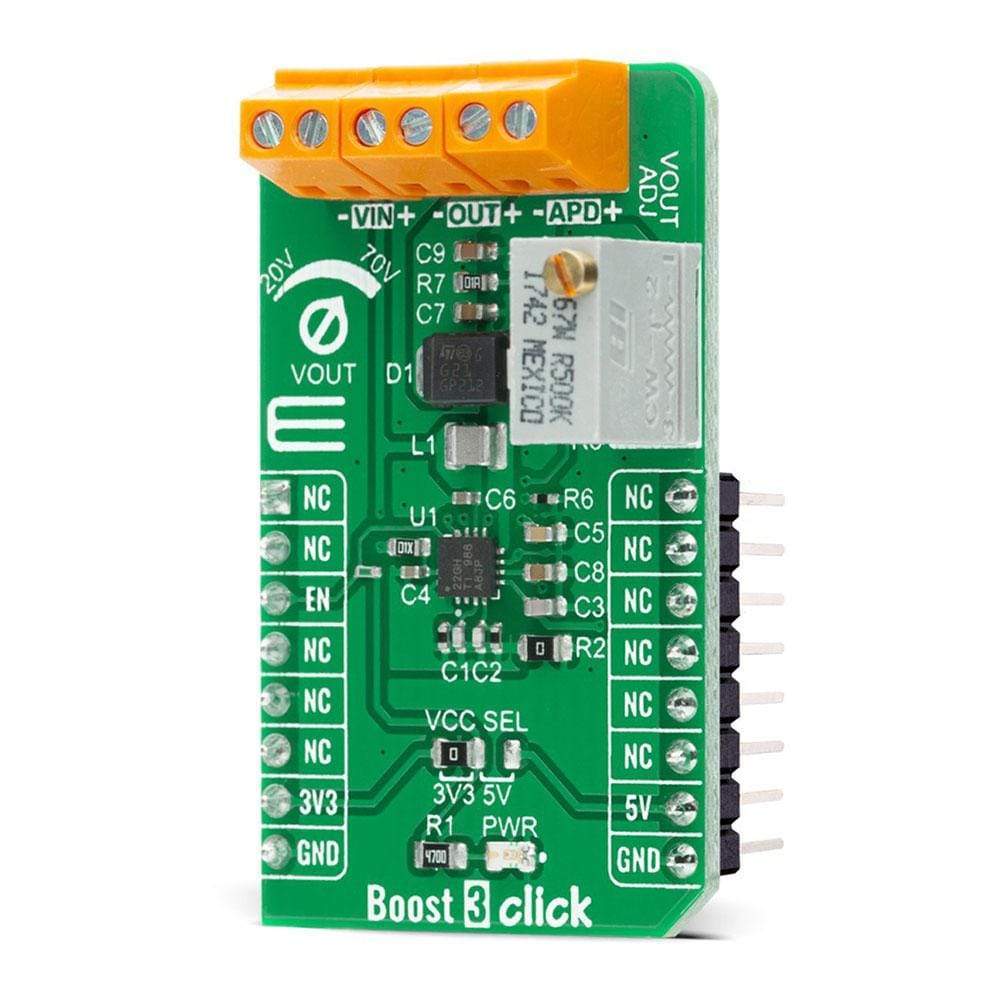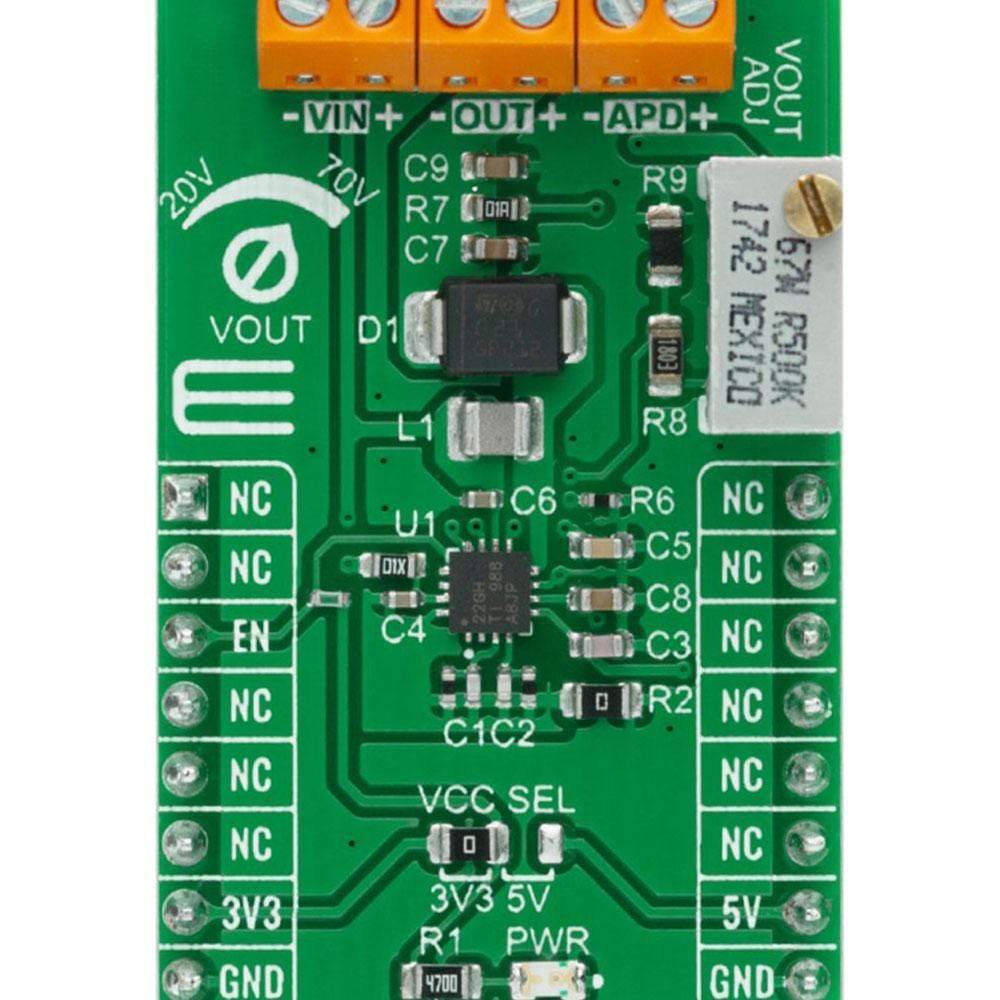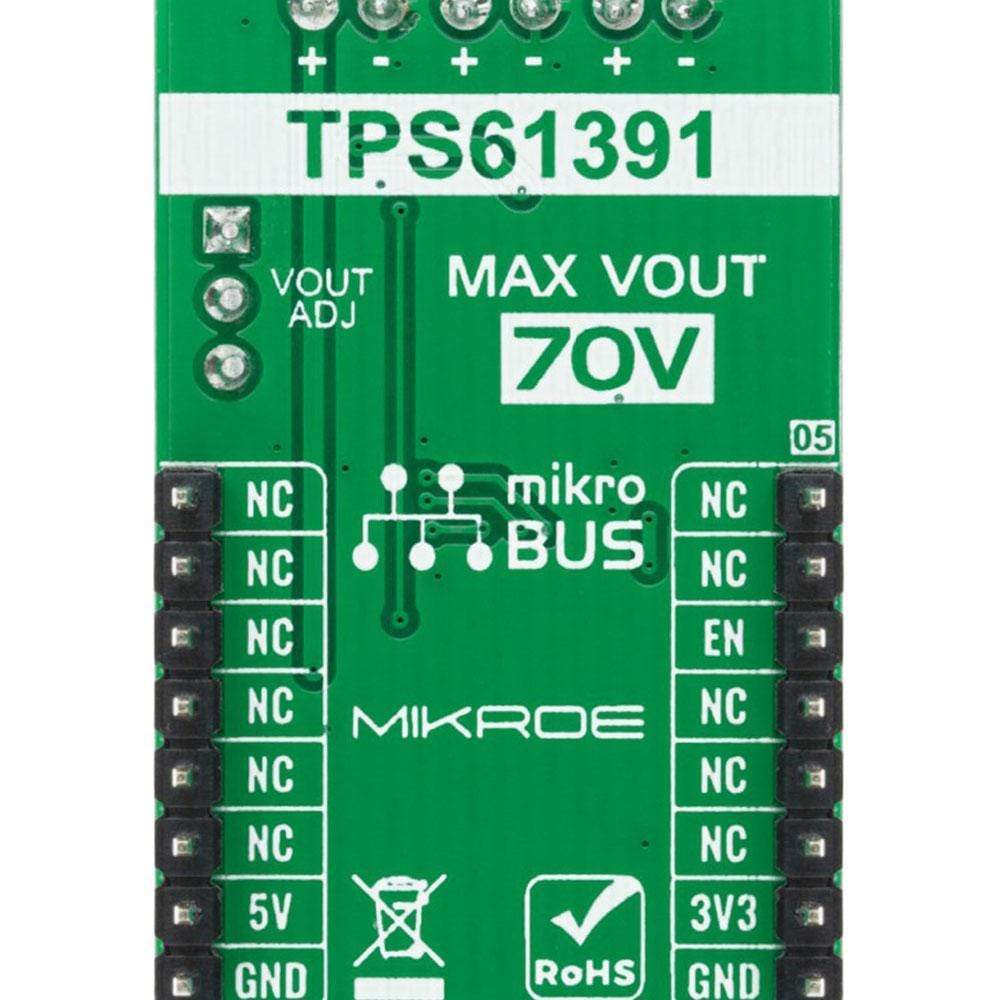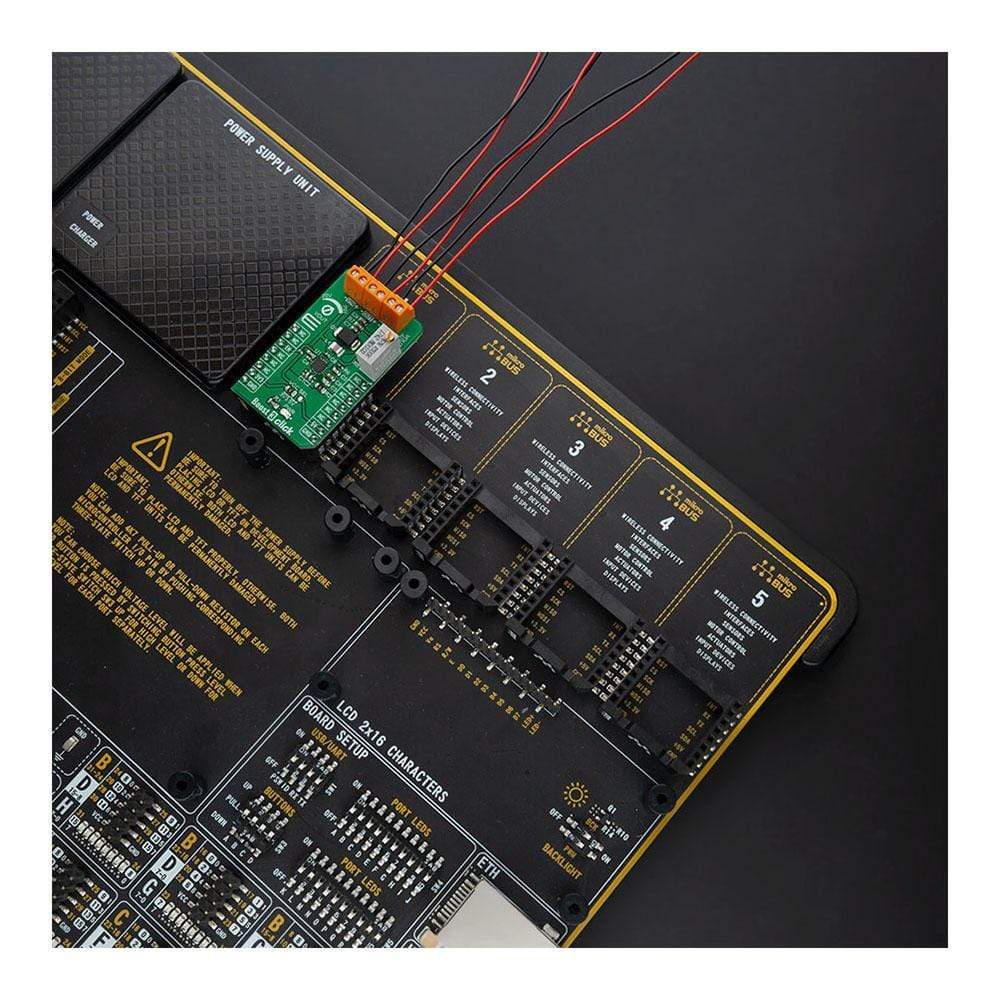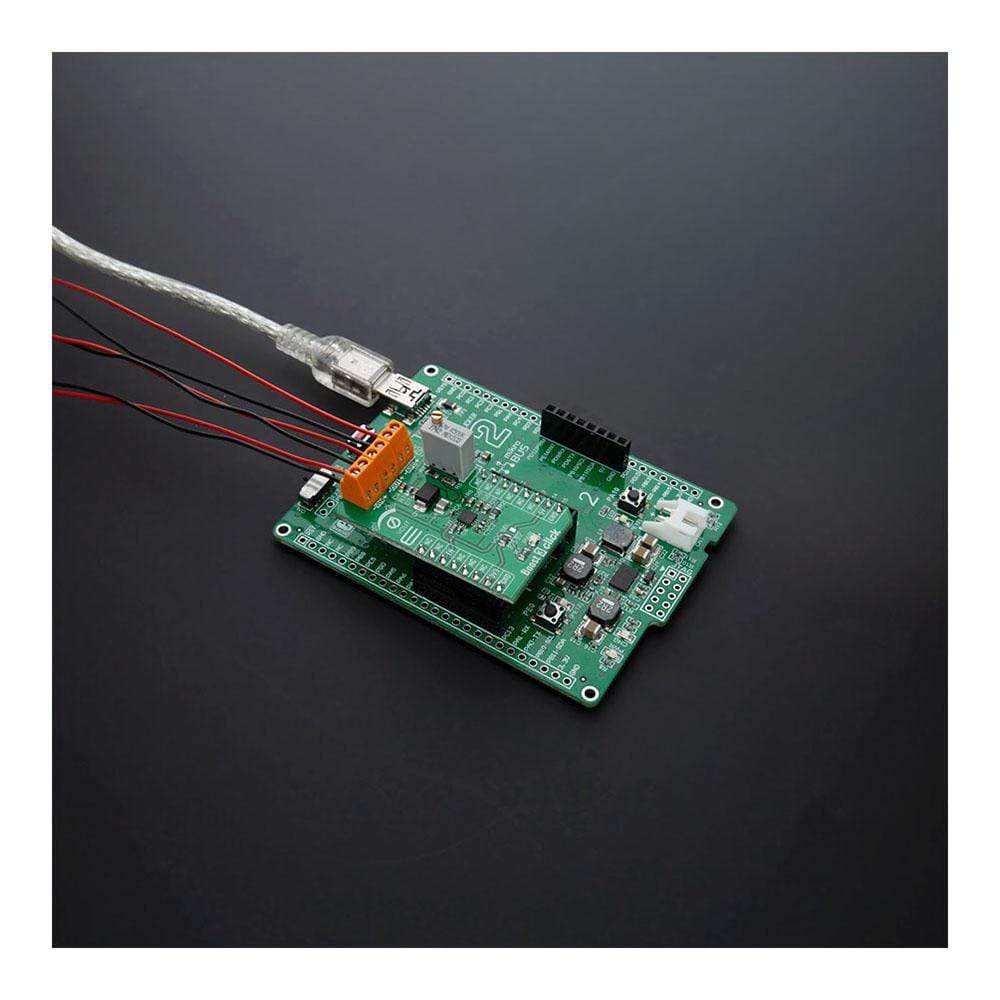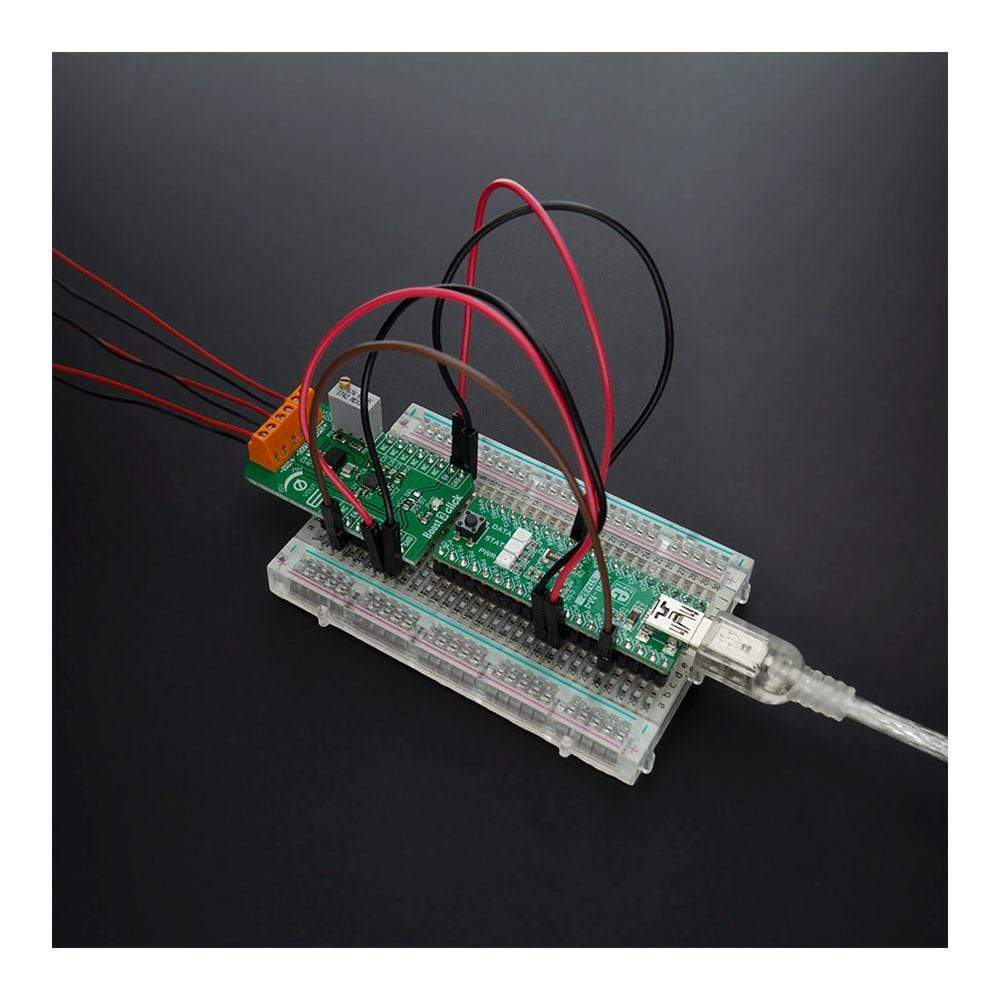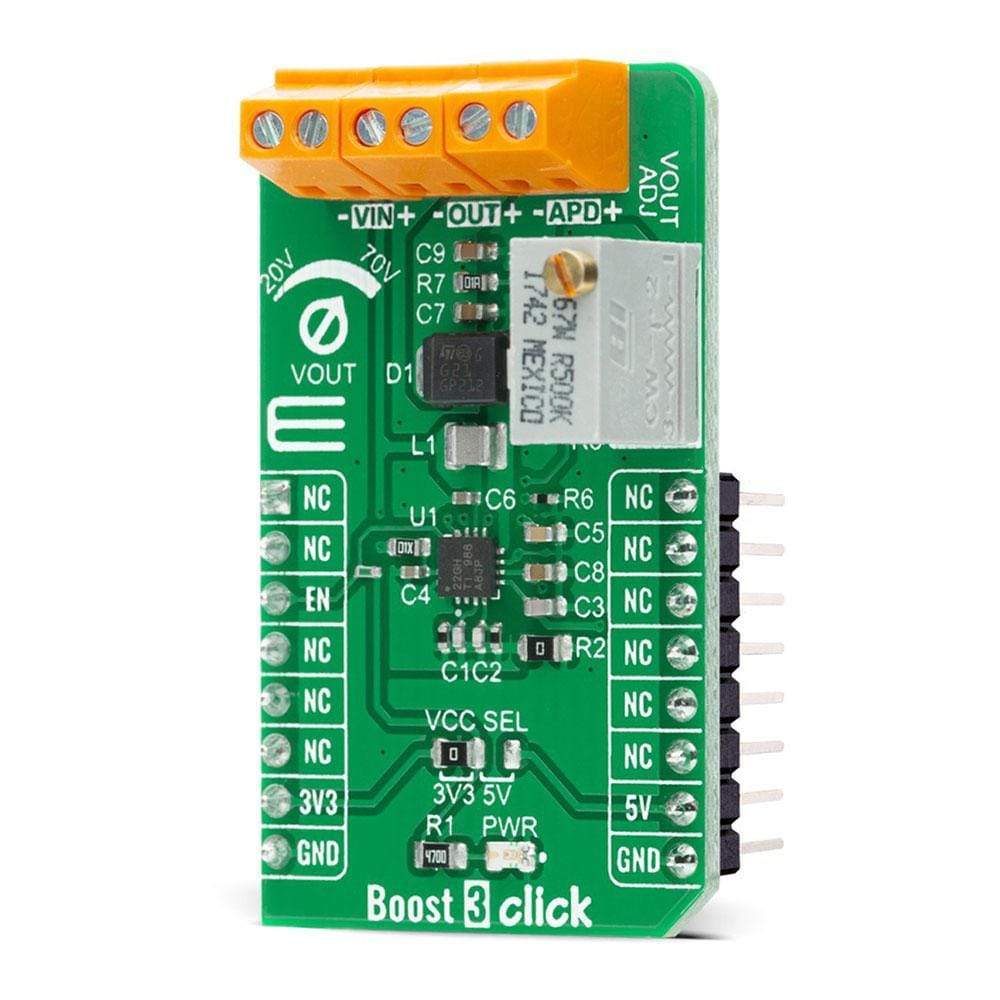

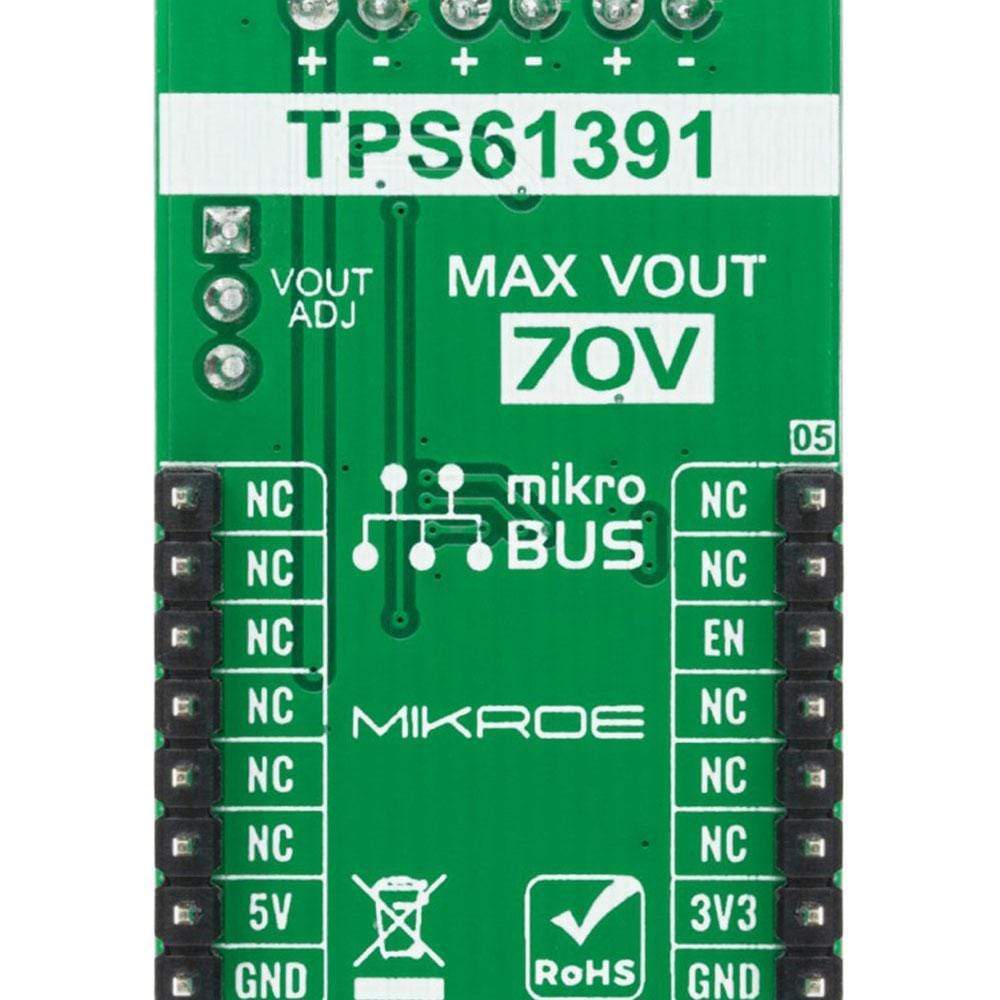
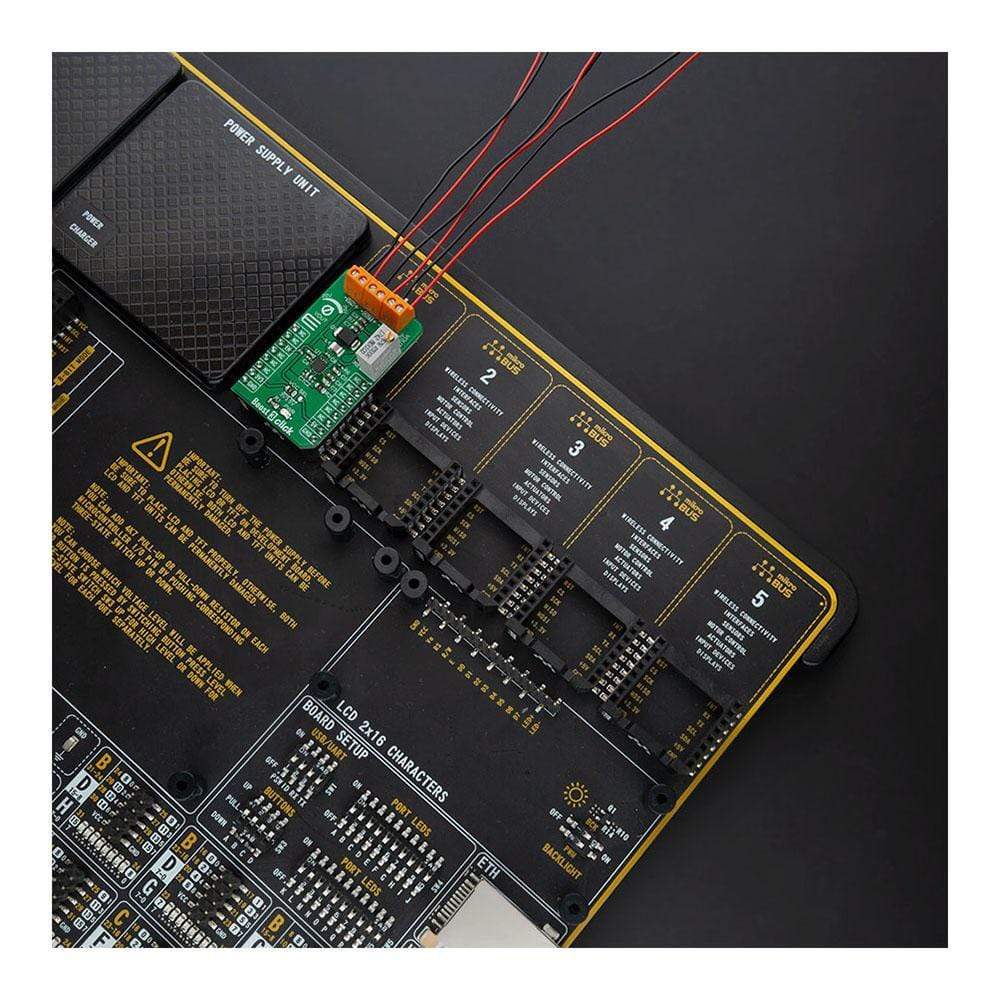
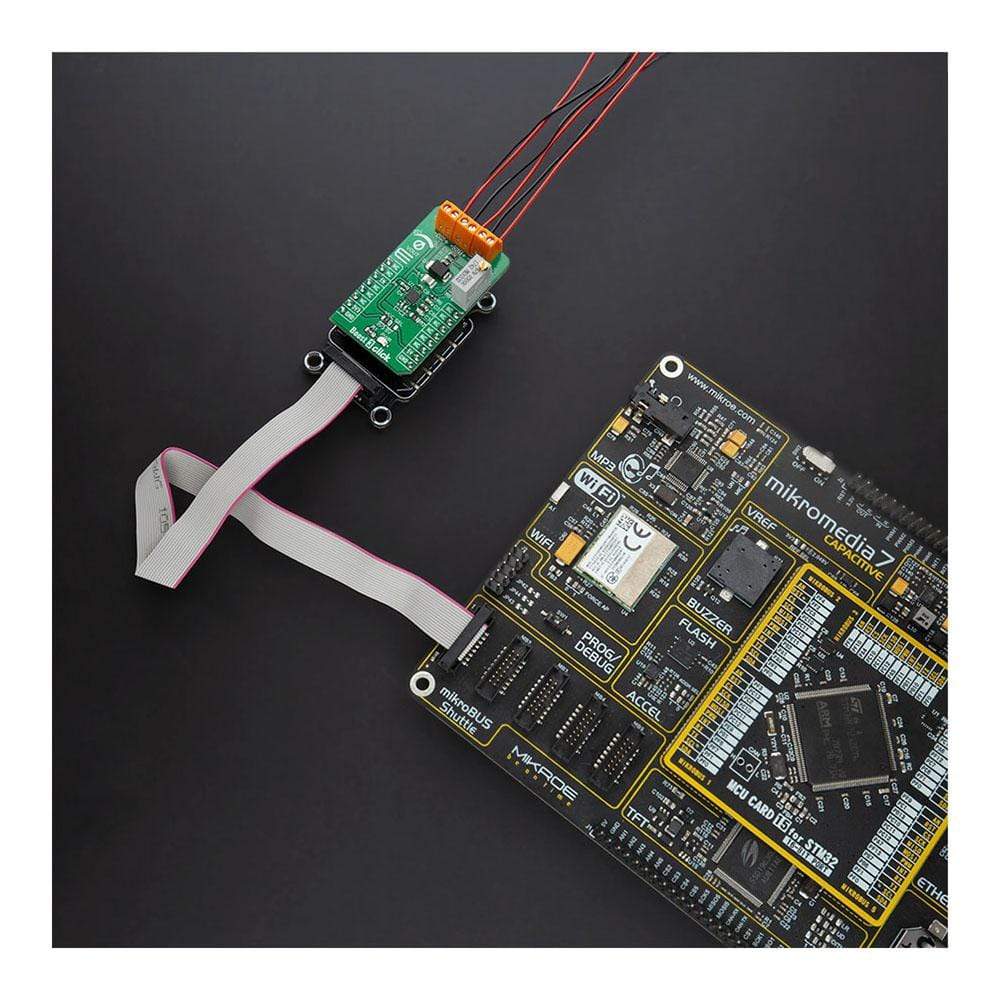
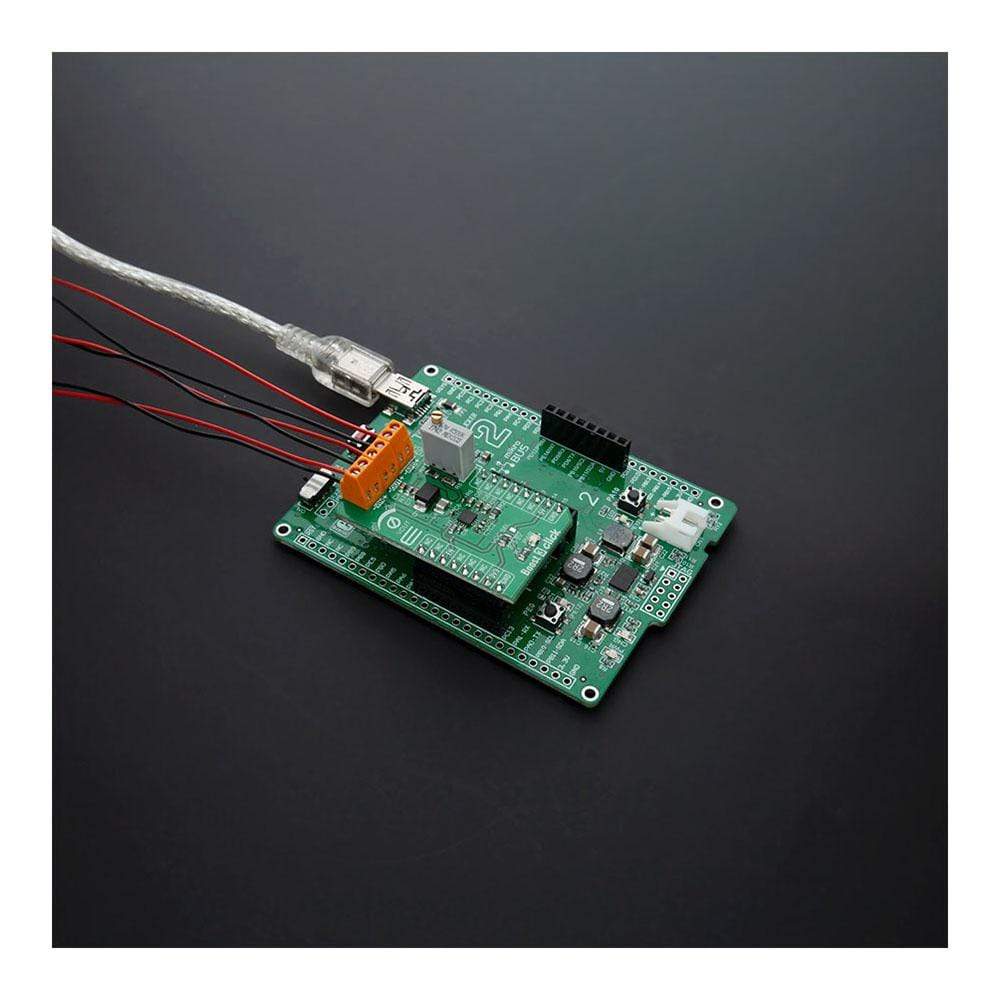
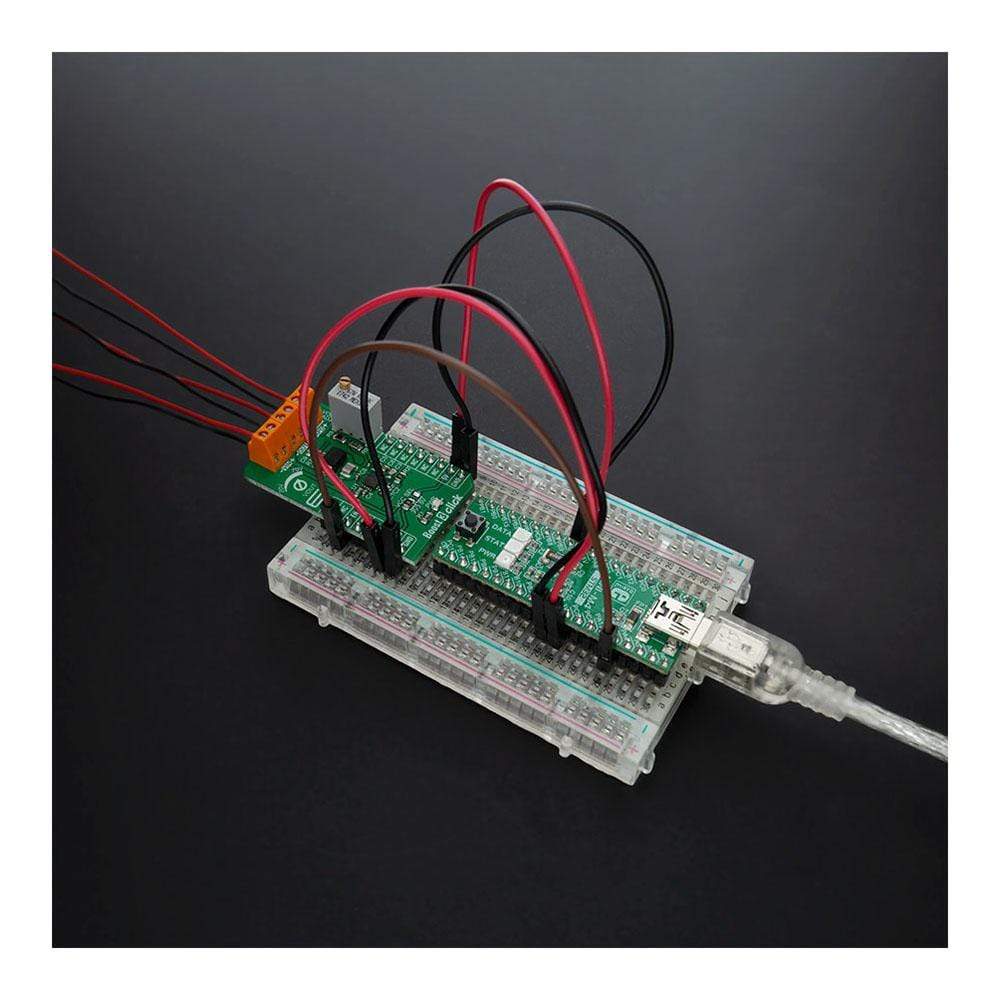
Overview
The Boost 3 Click Board™ is a compact add-on board that contains a boost converter with an integrated current mirror function. This board features the TPS61391, a 700-kHz pulse-width modulating (PWM) Step-Up converter with a 70V switch FET with an input voltage up to 5.5V from Texas Instruments. The TPS61391 includes an accurate current mirror, with two selectable gain options (1:5 or 4:5), and provides high optical-power protection with an additional FET in series with the APD power path, with the typical response time of 0.5µs. This Click Board™ is designed to be used for applications such as biasing and monitoring the avalanche photodiodes (APD) in the optical receivers, but it also can be used as a high voltage sensor supply or in battery-powered and automotive applications.
The Boost 3 Click Board™ is supported by a mikroSDK compliant library, which includes functions that simplify software development. This Click Board™ comes as a fully tested product, ready to be used on a system equipped with the mikroBUS™ socket.
Downloads
Der Boost 3 Klicken Sie auf Board™ ist eine kompakte Zusatzplatine, die einen Aufwärtswandler mit integrierter Stromspiegelfunktion enthält. Diese Platine verfügt über den TPS61391, einen 700-kHz-Pulsweitenmodulations-(PWM)-Aufwärtswandler mit einem 70-V-Schalt-FET mit einer Eingangsspannung von bis zu 5,5 V von Texas Instruments. Der TPS61391 enthält einen präzisen Stromspiegel mit zwei wählbaren Verstärkungsoptionen (1:5 oder 4:5) und bietet hohen optischen Leistungsschutz mit einem zusätzlichen FET in Reihe mit dem APD-Leistungspfad mit der typischen Reaktionszeit von 0,5 µs. Dieses Click Board™ ist für Anwendungen wie die Vorspannung und Überwachung der Avalanche-Photodioden (APD) in den optischen Empfängern konzipiert, kann aber auch als Hochspannungssensorversorgung oder in batteriebetriebenen und Automobilanwendungen verwendet werden.
Der Boost 3 Klicken Sie auf Board™ wird durch eine mikroSDK-kompatible Bibliothek unterstützt, die Funktionen enthält, die die Softwareentwicklung vereinfachen. Dieses Click Board™ wird als vollständig getestetes Produkt geliefert und ist bereit für den Einsatz auf einem System, das mit der mikroBUS™-Buchse ausgestattet ist.
| General Information | |
|---|---|
Part Number (SKU) |
MIKROE-4287
|
Manufacturer |
|
| Physical and Mechanical | |
Weight |
0.021 kg
|
| Other | |
Country of Origin |
|
HS Code Customs Tariff code
|
|
EAN |
8606027380617
|
Warranty |
|
Frequently Asked Questions
Have a Question?
Be the first to ask a question about this.

